The 5.543km Sepang International Circuit has been on the Formula 1 calendar since 1999, hosting of the Malaysian Grand prix. It features a number of medium-speed to fast curves as well as a couple of tight hairpins which means finding the right setup balance is tricky. The back straight and the start-finish straight will be a good DRS overtaking opportunity come race day. The weather often plays a part in Malaysia with rain a constant occurrence due to its hot and humid climate.
This year’s race will be the last Formula 1 start at Sepang as the Malaysian organisers decided not to continue their contract with FOM.
 Power Unit Notes
Power Unit Notes
- The ICE will be running at full throttle for around 62% of the lap. This is one of the higher percentages of the season, particularly when compared to Singapore which was around 47%. The longest periods of wide open throttle are the pit straight and the back straight before the hairpin, both of which are around 900m each.
- The humidity of the Malaysian climate reduces the air to fuel mix so theoretically gives the ICE an easier run as the greater the water content in the air, the less oxygen is available to burn. A turbocharged engine, however, always equalizes ambient pressure within the ICE so this effect will be mitigated.
- The hairpin connecting the two straights and the T1-2 corner complex puts an emphasis on turbo response.
- Sepang is medium difficulty for the MGU-K since the majority of corners are medium to high speed. The opportunity to recover energy through braking is therefore minimal and fuel consumption is high.
- Just under 50% of the Sepang lap is comprised of straights so the MGU-H has plenty of opportunity to recover energy from the exhaust gasses. In fact, Sepang is one of the most efficient circuits in this regard.
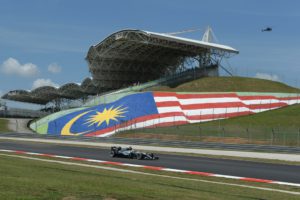 In numbers:
In numbers:
2.2 – The biggest roundabout in the world is in Malaysia at 2.2 miles in diameter.
130,000m – the Taman Negara is amongst the oldest rainforests on Earth at 130,000m years old.
20 – According to estimates, Malaysia has 20% of the world’s animal species.
4,095 – At 4,095 metres, Mount Kinabalu is the highest mountain in Malaysia.
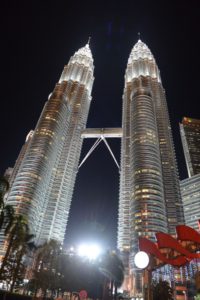 The Malaysian Grand prix
The Malaysian Grand prix
Race title 2017 Formula 1 Petronas Malaysia Grand Prix
Circuit name Sepang International Circuit
First race 1999
Previous winners
2016 Daniel Ricciardo, 56 laps, 1:37:12.776s
2015 Sebastian Vettel
2014 Lewis Hamilton
History lesson Malaysia has had a long and fruitful association with Formula 1. It began in the late ’90s when the Sepang International Circuit was constructed on agricultural land near Kuala Lumpur International Airport, and it has been a regular fixture on the F1 calendar since ’99. The track was the first to be designed and built by architect Hermann Tilke, whose influence extends to 10 circuits on this year’s calendar, and the undulating 5.543km/3.444-mile layout is recognised as one of the most exciting challenges in the world for drivers
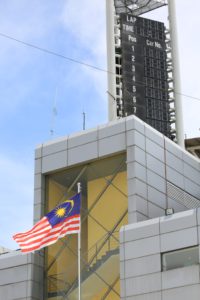 Travel
Travel
City Kuala Lumpur
Time zone BST+7/CET+6
Population 1.65 million
How far? Kuala Lumpur is 10,600km (6,587 miles) from the McLaren Technology Centre
Getting there All of the Formula 1 freight has made the 300-mile (483km) trip from Singapore (scene of the last grand prix) to Kuala Lumpur by road. However, the two-week gap between races has meant that all team personnel have flown back to the UK for a week and will begin travelling to Malaysia at the start of race week. More than 50 international airlines fly into Kuala Lumpur, so there are many flight options from London
Surprising fact Malaysia has an incredibly diverse population. Of the country’s 32 million people, 50 per cent are Malay, 23 per cent are Chinese, seven per cent are Indian and the remaining 20 per cent are comprised of indigenous groups
Local speciality Malaysia is called the street food capital of Asia, and with good reason. Hawker stalls are found everywhere and offer everything from samosas to spicy noodle curry and cendol, which is a desert made from sweet grass jelly and coconut milk
Weather Late September is still the high season, but the chance of rain increases as the monsoon season approaches. Temperatures will be slightly higher than they were in Singapore two weeks ago because the race takes place in the day, so teams should expect an ambient of 30 degrees Celsius and 80 per cent humidity
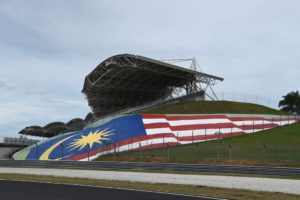 Track
Track
Track length 5.543km/3.444 miles (eighth longest track of the year – longest: Spa-Francorchamps, shortest: Monaco)
2016 pole position Lewis Hamilton, 1m32.850s
2016 fastest lap Nico Rosberg, 1m36.424s (lap 44)
Lap record 1:34.223s (Juan Pablo Montoya, 2004)
Tyre choice Red Supersoft, yellow Soft and white Medium compounds – the seventh time this combination has been used in 2017
Distance to Turn One 660m/0.410 miles (longest of season: Barcelona 730m/0.454 miles)
Longest straight 920m/0.572 miles, on the approach to Turn 15 (longest of the season: Baku, 2.1km/1.305 miles)
Top speed 330km/h/205mph, on the approach to Turn 15 (fastest of season: Monza, 360km/h/224mph)
Full throttle 65 per cent (highest of the season: Monza, 75 per cent). The longest period of full throttle is 12s, on the approach to Turn 15
Brakewear Medium. Only 15 per cent of the lap is spent braking
Fuel consumption 1.79kg per lap, which is average
ERS demands Medium. There is a high dependency on ERS at every track, but the eight braking zones around the lap make it possible to recover braking energy
Gear changes 57 per lap/3,192 per race
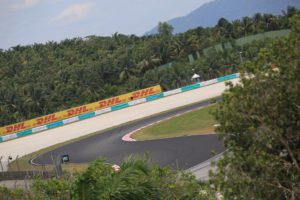 Race
Race
Laps 56 laps
Start time 15:00hrs local/08:00hrs BST/09:00hrs CET
Grid advantage The racing line is on the left and that’s where the grip lies at the start. However, there’s a rainstorm most evenings, so there’s a chance that the grid will be washed clean before the start, negating any grid advantage
DRS There are two DRS zones, on the approaches to Turns One and 15
Don’t put the kettle on… The combination of high track temperatures and fast corners encourages drivers to make more pitstops, not less, at Sepang. Daniel Ricciardo won last year’s race with two stops, while Max Verstappen finished second with three, and strategy was influenced by three Virtual Safety Car periods. Pirelli are taking softer tyre compounds to the race this year, which could lead to even more stops. A conventional three-stopper would result in cars visiting the pits on laps 10, 25 and 40
Pitlane length/Pitstops 420m/0.261 miles (longest of the season: Silverstone, 457m/0.284 miles). It takes 22s to make a stop
Safety Car likelihood 20 percent. There tend to be lots of incidents and accidents at Sepang, but large run-off areas allow marshals to get cars out the way quickly
Watch out for… Rain. The later start time of 15:00hrs pushes the finish of the race towards early evening, which is when the rain showers tend to hit
VIDEO VAULT: MALAYSIA 2013 ??
Webber’s fury at Vettel after ‘Multi 21’ call is ignored ?
WATCH >> https://t.co/vH65kAjqlc #MalaysiaGP pic.twitter.com/6HELBp72bV
— Formula 1 (@F1) September 25, 2017
































